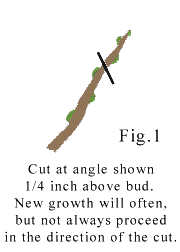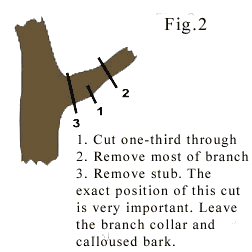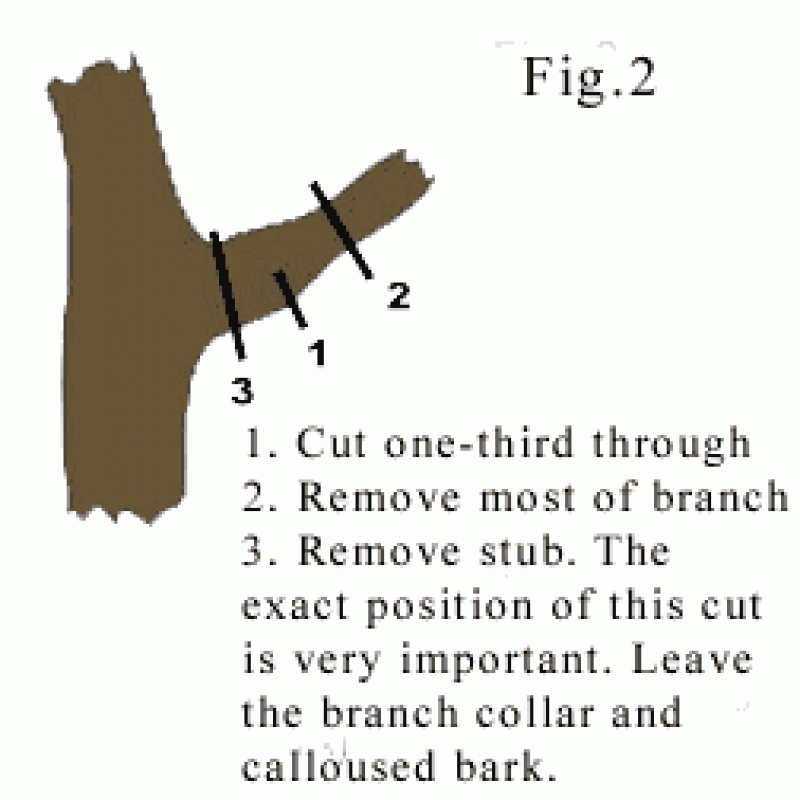The Art and Science of Pruning: a Short Introduction
by Dan Eskelson on Apr 30, 2012
Please also visit part 2, The Art and Science of Pruning
Most landscape plants need regular pruning, whether to preserve a loose, natural form or to create tight,compact shapes. Each tree or shrub has its own, unique pruning needs, depending on variety, soil type, exposure, and desired result. For instance, we prune a birch or Hawthorne for ornamental value, but prune an apple or plum for fruit production; basic pruning rules apply to both, but final techniques and results are vastly different. Each plant will change its pruning requirements from year to year.
The "art" of pruning seeks to create a mature form throughout several seasons - or several decades - it is an art not to be hurried. The "science" of pruning requires knowledge of plant types, growth habits, flowering or fruiting characteristics and the mastery of a few important skills.
Pruning stimulates and directs growth, maintains plant health and creates a form to support the "crop" (foliage, flowers or fruit). Two basic techniques, heading back and thinning are used to create form. The desired form for standard-size fruit trees and many ornamentals is a vase shape, with four to seven strong, well-placed "leaders". These leaders from the framework which holds future growth. In contrast to the vase shape, dwarf and semi-dwarf fruit trees and some ornamentals are pruned to a central leader, or modified central leader form. The early shaping of young trees and shrubs is extremely important for the development of a strong, well balanced framework.
Any cut made to a small branch must be made just above a bud.  This heading back influences the form of the plant by directing growth according to the position of the bud and by stimulating growth below the cut. Thinning creates form by removing entire branches. On vigorously growing plants (apples and many others) thinning is required for most of the plant's life. With yearly pruning,
This heading back influences the form of the plant by directing growth according to the position of the bud and by stimulating growth below the cut. Thinning creates form by removing entire branches. On vigorously growing plants (apples and many others) thinning is required for most of the plant's life. With yearly pruning,  however, thinning of wood older than one year is seldom required. If larger, saw cuts are necessary, follow the procedure.
however, thinning of wood older than one year is seldom required. If larger, saw cuts are necessary, follow the procedure.
Although many plants are pruned during dormancy (winter-early spring), several important exceptions exist. Shrubs which bloom in early spring (rhododendron, azalea, forsythia and others) have developed flower buds the previous season and should be pruned shortly after bloom. Maples will "bleed" excessively if cut in early spring and are best pruned in fall. Evergreens are pruned shortly after the full development of the new season's growth.
Pruning maintains plant health by removing dead, diseased and damaged wood. Diseased wood should be removed from the site immediately; in severe cases such as firelight in pears, the cutting tool must be dipped in a weak bleach solution after each cut. The importance of proper cutting techniques cannot be overemphasized. Well built tools, with razor-sharp edges, must be used; a ragged cut will not heal, leaving the plant susceptible to rots and disease. For the same reason, cuts must be made at precisely correct locations. Do not use tree paint or any other sealer on pruning cuts.
The above guidelines are meant as a very brief survey of basic pruning purposes and techniques. Before making too many cuts, the aspiring pruner should first attain further knowledge through reading and/or lessons from an experienced landscape professional. This fascinating art and science is well worth the time and energy invested in learning.
Popular Articles
Three Places to Spend Money on the Exterior of Your Home
When you have the exterior of your home remodeled, you are investing, time, energy and convenience into the project and you want to make sure that...
104861 Views
Homemade Headboards-Make an Upholstered or Wooden Headboard
Homemade headboards can add a lot of personality to any bedroom. They can be coordinated with existing furniture and room decor or they can be the...
80119 Views
When to Use a Brush, Roller or Sponge Brush
Brushes are a good choice for painting trim and woodwork. They are also useful for cutting in the edges around the top and bottom edges and corners...
72781 Views
Creating a Cottage Kitchen with Bead Board
Kitchen decor can range from modern and bold to elegant and elaborate by using strategic kitchen pieces. One of the most popular decorating trends...
58547 Views
Gas Fireplace Diagnostics and Troubleshooting
Follow these steps for diagnosing and troubleshooting Gas Fireplaces repairs. For the average DIYer, this may seem intimidating, depending on the...
35586 Views
Latest Articles
How Much Does it Cost to Take a Bath?
Plumbers know that a bath may seem like a relaxing luxury, but the real cost extends far beyond your water bill. The average soak uses 35 to 50...
on Apr 8, 2025
10 Concrete Patio Ideas on a Budget
A concrete patio can be a game-changer for your outdoor space. It is durable, versatile, and can be customized to fit your style. But what if you...
on Mar 25, 2025
Tips for Creating a Stunning Personalized Photo on Canvas
Order the unique beauty of a personalized photo on canvas and bring your memories to life. With a customized photo on canvas, you can transform...
on Mar 7, 2025
Best Areas to Buy Property in Singapore for Long-Term Growth
Singapore's real estate market remains one of the most stable and lucrative in the world. With limited land supply, strong governmental...
on Feb 18, 2025
Troubleshooting Excess Water in Your HVAC Secondary Condensate Drain Pan
When maintaining your air conditioning system, it is easy to overlook the condensate drain pan - until excess water starts pooling in places where...
on Jan 12, 2025
Featured Articles
What Type of Licensed Contractor Should You Hire?
on Feb 28, 2017
Hire Contractors / Estimates

Looking for a specialty project? There are many types of contractors available for your home improvement needs. Finding the right type of...
Sponsored Articles
Best Areas to Buy Property in Singapore for Long-Term Growth
on Feb 18, 2025
Real Estate / Finance

Singapore's real estate market remains one of the most stable and lucrative in the world. With limited land supply, strong governmental...
Actions
Top Categories
- Garden / Landscaping / Patio — 264
- Kitchen / Bathrooms — 240
- Real Estate / Finance — 203
- Appliance / Repair — 186
- Interior Design / Decor — 184
- HVAC / Air Conditioning — 148
- Cleaning / Maintenance — 144
- Improvements / Remodeling — 131
- Plumbing / Basements — 118
- Floors / Tile / Hardwood — 116
- Doors / Garages — 113
- Safety / Security — 113
Articles Archive
More DIY Articles
Remodeling with Safety in Mind
Remodeling can be a time consuming and stressful time in the life of any homeowner. There are the jobs that start off being small and simple but...
Protecting Your Home By Extending Your Security System
Although most established neighborhoods have been equipped with basic home burglar alarm type of security for a few decades, it has only been in...
Maximize Your Basement: Tips for Remodeling this Essential Part of You
When people think about renovating their homes, they often overlook a major component of their house: the basement. Sure, you can leave the...
Information to Help You with Roof Repair
With the arrival of winters, the tension related to roof repairs comes in parallel. Being concerned homeowners one has to think about necessary...
Four Ways to Clean Wood Products in Your Home
Wooden furniture and wooden surfaces can be tough to maintain, primarily if they collect dust frequently and require constant cleaning. There are...

